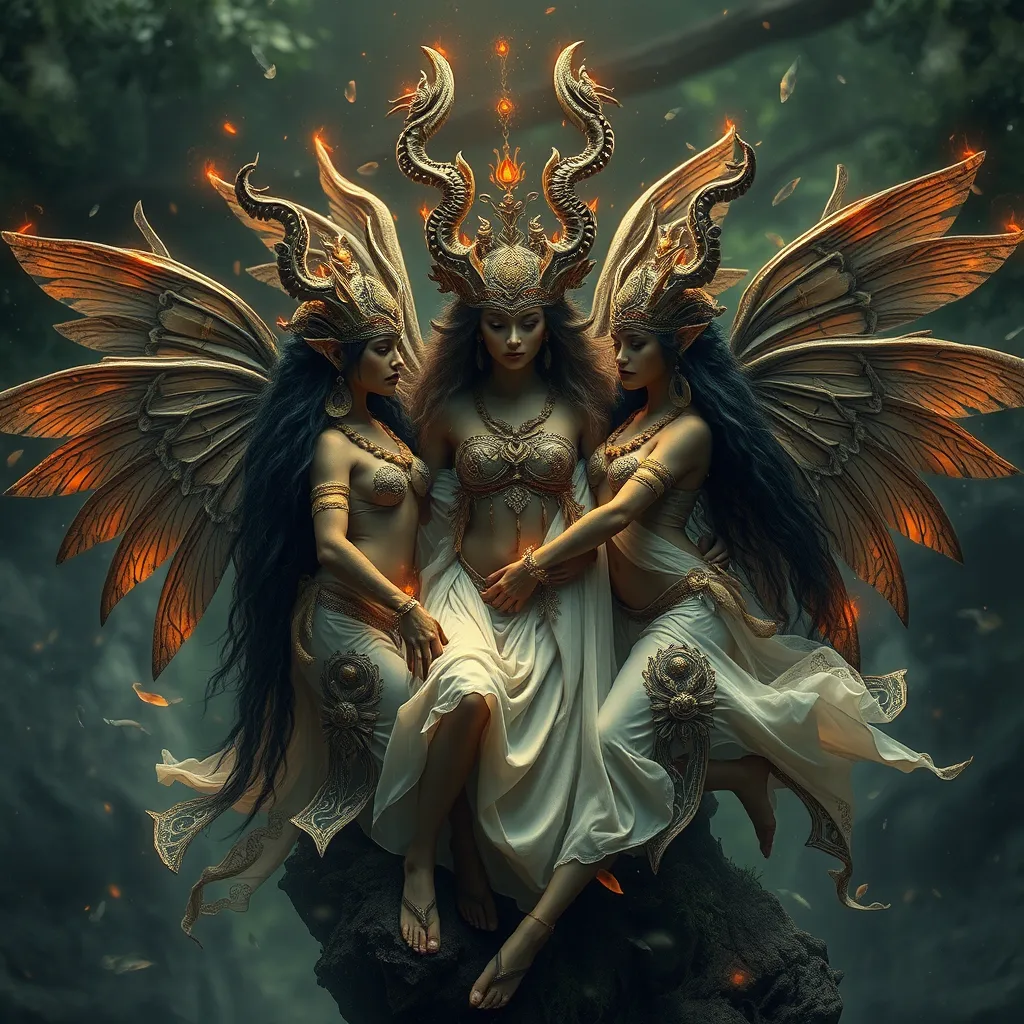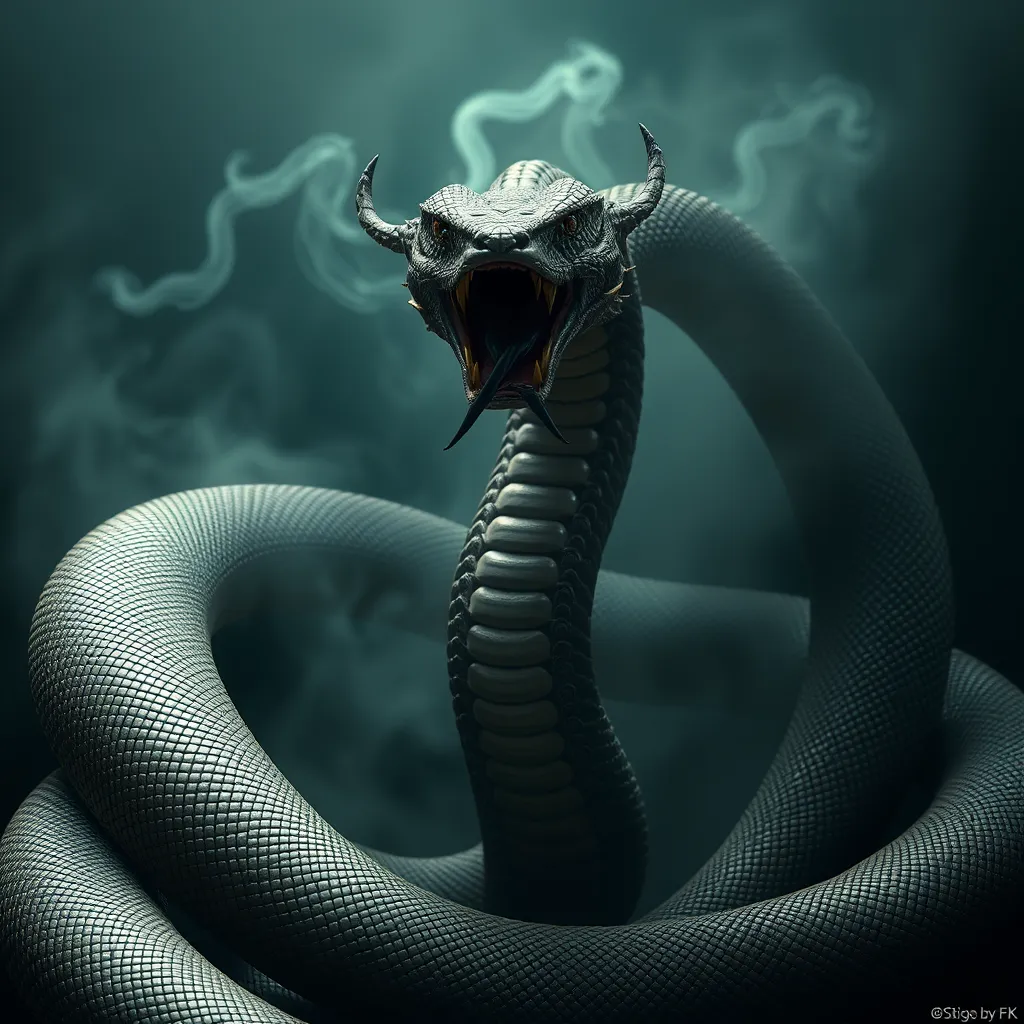The Nymphs of South American Mythology: Exploring the Lore of the Yacumama and the Iara
I. Introduction to South American Mythology
South America is a continent rich in cultural diversity, with a myriad of mythological traditions that reflect the beliefs and values of its indigenous peoples. From the Andes to the Amazon, these myths often center around the natural world, emphasizing the profound connection between humans and nature.
Water, in particular, plays a pivotal role in many South American myths, symbolizing both life and danger. Rivers, lakes, and other bodies of water are often personified as deities or spirits that can be both nurturing and perilous.
Among the prominent figures in South American mythology are the Yacumama and the Iara. These water nymphs embody the complexity of nature and the dualities of life, making them significant in the lore of various cultures across the continent.
II. The Yacumama: Guardian of Rivers
The Yacumama, often referred to as the “Mother of Water,” is a powerful water spirit revered in many indigenous cultures, particularly among the Amazonian tribes. She is typically depicted as a massive serpent or snake, embodying the strength and mystery of the rivers she protects.
In local culture, the Yacumama symbolizes fertility, abundance, and the nurturing aspects of water. She is viewed as a guardian of aquatic life and a protector of those who respect the rivers.
Numerous legends surround the Yacumama, with stories often detailing her protective nature. For instance, it is said that she can sense when someone is in danger in her waters, appearing to save them or, conversely, punishing those who disrespect her domain. Some tales recount how fishermen who overharvest or pollute the rivers will find themselves facing her wrath.
III. The Iara: The Enchantress of Waters
The Iara, also known as “Yara” or “Iara,” is another enchanting figure in South American mythology. Typically portrayed as a beautiful woman with long hair, she is often associated with rivers and lakes, captivating those who encounter her.
While she is revered as a protector of aquatic life, the Iara also possesses a seductive and dangerous nature. Many stories depict her luring men to the water’s edge, where they may drown or become entranced by her beauty.
The folklore surrounding the Iara illustrates her duality; she embodies the allure of nature while simultaneously representing its perils. Tales of her interactions with humans often serve as cautionary stories, warning against the dangers of succumbing to temptation and the unpredictable nature of water.
IV. Comparative Analysis: Yacumama vs. Iara
While both the Yacumama and the Iara are water spirits, they serve different roles within South American mythology. The Yacumama is primarily a guardian, symbolizing the nurturing aspects of water and its vital role in sustaining life. In contrast, the Iara embodies the seductive and perilous nature of water, representing both beauty and danger.
Despite these differences, both figures share common themes of femininity and nature. They illustrate the powerful connection between women and the natural world, often seen as caretakers and protectors within their respective cultures.
Culturally, the Yacumama and Iara hold significant relevance, with their stories and attributes varying across different South American traditions. They reflect the deep respect indigenous peoples have for nature and the lessons learned from their interactions with water and the environment.
V. The Role of Water in South American Myths
Water is a central theme in many South American myths, especially in indigenous cultures that rely heavily on rivers and lakes for survival. These bodies of water are not only crucial for sustenance but also serve as spiritual and cultural symbols.
In these traditions, water is seen as:
- A source of life, providing drinking water and supporting ecosystems.
- A site of danger, where unpredictable currents and depths can pose threats to unwary travelers.
- A spiritual realm, inhabited by deities and spirits that govern the waters.
Common motifs of water spirits abound in South American folklore, with many cultures sharing similar beliefs about the protective and vengeful nature of these entities. The stories of the Yacumama and Iara are just two examples of how water is revered and feared in these rich mythological traditions.
VI. Modern Interpretations and Cultural Representations
In contemporary times, the figures of Yacumama and Iara have found new life in various forms of art and literature. Artists and writers draw upon these ancient myths to explore themes of nature, femininity, and cultural identity.
The resurgence of interest in indigenous myths reflects a broader movement to acknowledge and celebrate the rich cultural heritage of South America. This has led to adaptations in popular culture, including:
- Literary works that reinterpret the legends of Yacumama and Iara.
- Visual art that captures their essence and symbolism.
- Films and media that incorporate these figures into modern narratives.
Such adaptations not only keep the myths alive but also serve to educate new generations about the significance of these cultural figures.
VII. Preservation of Mythology: Oral Traditions and Storytelling
Oral tradition plays a crucial role in preserving myths like those of the Yacumama and Iara. Storytelling is an essential aspect of indigenous cultures, serving as a means of passing down knowledge, history, and values.
The importance of storytelling in indigenous communities cannot be overstated. It fosters a sense of identity and connection to the past, allowing younger generations to understand their cultural heritage.
However, these traditions face significant challenges in modern times, including:
- Urbanization and the loss of traditional lifestyles.
- The influence of globalization on cultural practices.
- Environmental degradation threatening the natural landscapes that inspire these stories.
Efforts to document and promote oral traditions are vital for ensuring that these myths continue to be shared and celebrated.
VIII. Conclusion: The Enduring Legacy of Yacumama and Iara
The stories of the Yacumama and Iara are more than mere folklore; they represent the enduring legacy of South American mythology. These nymphs reflect the deep connection between humans and nature, embodying the complexities of life, femininity, and the environment.
In contemporary culture, the relevance of these water deities continues to resonate, particularly in discussions surrounding environmental conservation and the importance of protecting our natural resources. The rich tapestry of South American mythology invites us to explore and appreciate the profound lessons embedded within these ancient tales.
As we reflect on the significance of figures like the Yacumama and Iara, we are reminded of the need to respect and preserve the natural world, honoring the spirits that inhabit it.



